I’m a huge fan of +R training. That doesn’t mean I always succeed in making my training sessions a fully positive experience, it also doesn’t mean I don’t appreciate good training even if it’s not not entirely +R. Good training is good training. But for my own dogs and my student’s dogs I always prefer to choose the most +R training journey I can.
One of the foundations of R+ training is making sure your dog has all the prerequisite skills in place for learning the new exercise.
It could be that your dog has to know a specific reinforcement delivery (are you going to reinforce from your hand or with a thrown reinforcement?).
Or maybe your dog needs a set of skills to learn a new behavior chain – for example to hold a dumbbell in her mouth while sitting in front of you. It would be good to first teach sitting in front of you separately, then teach holding a dumbbell and only then put the two exercises together.
And then there are prerequisite skills that are way too often overlooked, yet they are crucial for your dog’s success.
These are physical skills (that’s what I like to call fitness skills, but not only focusing on strength, but also on body awareness, balance and coordination).
For example, you could teach your dog to sit with just “bum needs to touch the ground” criterion. But if you are looking at sit in a sport training context (most often seen in obedience sports) then having just this one criteria of your dog’s bum touching the ground isn’t going to cut it.
In more formal sits your dog often needs to go into the position without moving front paws (or rear paws, depending on your sport and specific exercise, but we’ll focus on front paws still in this post). Your dog then needs to swiftly push off the ground with rear feet, jump them behind the front paws and lower his bum to the ground. Sometimes your dog needs to do that while looking up and focusing on something specific. Like your shoulder maybe.
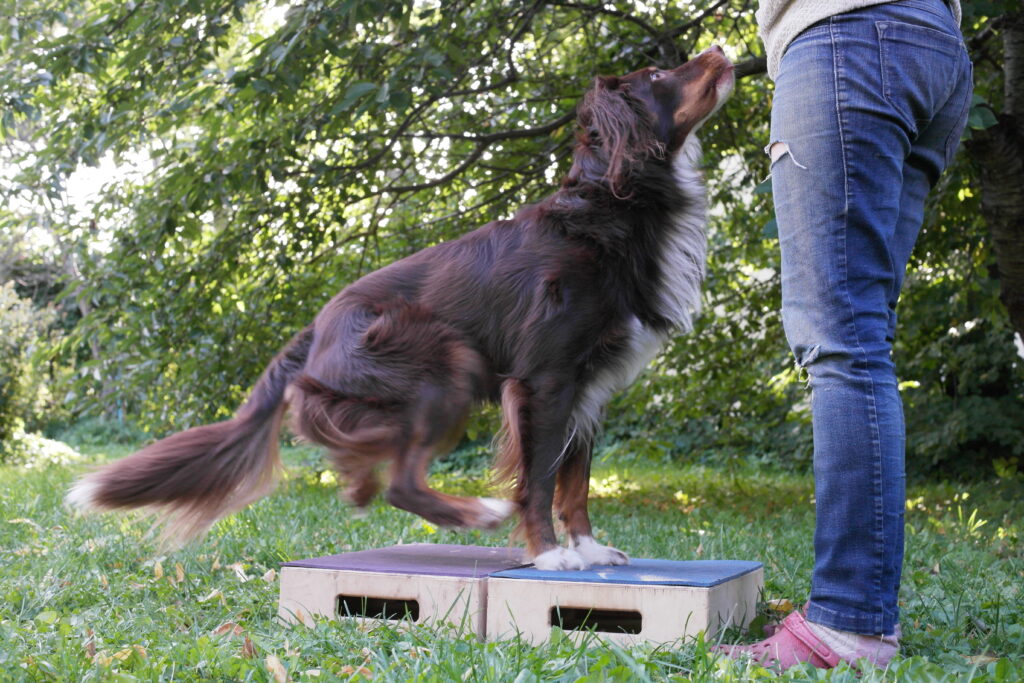
And suddenly we have this exercise where in order to sit, your dog needs to have excellent body awareness to know exactly where his rear feet are with respect to the front feet. He also needs to have great coordination to keep his front paws still while the rest of his body is moving. He needs to have strong shoulders to carry the extra weight while rear feet are up in the air, and core strength to pull his rear feet close to his front feet and then lower the body into a sit quickly, but with control.
One of the well known and more acknowledged benefits of fitness training is that your dog will get a lot better at position changes (like going from a stand to a tucked sit over and over again during obedience training) – the position changes will be faster, tidier, with less fidgeting. Your dog is also able to do more position changes without tiring and hold the position for longer during duration exercises!
That’s what I mean – physical skills or fitness skills are a prerequisite for sport training.
And every sport exercise has physical skill prerequisites. Jumping, running on the dog walk, heeling and so on. Every single exercise where your dog has to move in a specific way, requires physical skills from your dog. Otherwise it wouldn’t be a sport, would it?
Fitness training isn’t only about getting your dog to look fit and having stronger muscles. It’s about giving your dog the physical skills needed to know exactly how to use and control his body, where every part of his body is, how to interact with objects, how to coordinate movements, how to balance.
It’s about giving your dog the essential foundation skills to succeed in sport exercises.
Now, you may be thinking that great splitting during training will help your dog develop these skills. Or that running freely around in the forest is the best way to develop these skills. And you are not wrong. Splitting and going on fun hikes do help. But here are some things to consider:
1 If you are expecting your dog to learn these skills during sport training, you are expecting him to multitask. Like learning to ride a bicycle while also learning to recite a poem by heart. Learning a physical skill at same time as learning a mental task. Not the easiest thing to do, is it?
Most likely you’d learn to recite a poem while riding a bike a lot faster if you split it up into 2 different exercises: learn to ride a bike as one exercise and reciting a poem as a separate exercise, before trying to put them together into one exercise.
Learning how to use his body + technical aspect of the exercise at the same time is multitasking for your dog and will most likely slow down his learning process.
Also… isn’t the foundation of +R training to teach all the necessary foundation skills BEFORE teaching your dog a new exercise? In my training world, fitness training is an essential part of +R training as it’s the foundation of everything I ask of my dog.
2 Yes, going on forest hikes and runs (off-leash when possible) is essential for physical and mental wellbeing. However…. keep in mind that many sport challenges are highly specific.
Like running on the dog walk – where in the forest will your dog practice running on a narrow surface? And then try it again with a different entry angle? And then try hitting a specific spot on that narrow surface? And while you are running next to him?
Probably you will be able to find something if you look hard enough… But I think we have to agree that this is not a very common sight.
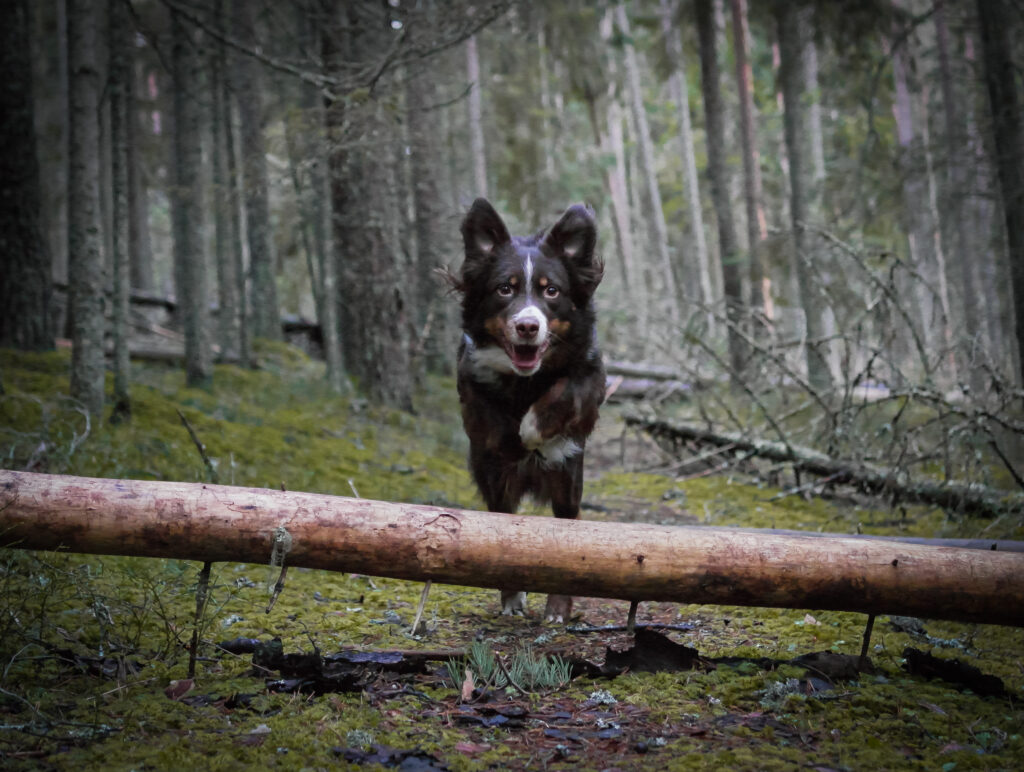
Or another example: where on the hikes does your dog practice jumping technique and gait adjustment? There may be a sequences of fallen trees that your dog will jump over… But can you honestly say that your dog is learning to extend and collect from this the same way he needs for running agility?
And here’s the thing. While it may sound time consuming, starting the training of sport exercises with fitness work first, it really isn’t.
In fact, I’d argue that IT’S A LOT FASTER than expecting your dog to multitask and learn fitness skills (he will have to learn them eventually, otherwise he wouldn’t be able to do the sport well) while also trying to figure out the criteria of the sport exercises and meet them with precision.
I can’t talk about my dogs’ learning speed before and after fitness training because they’ve been doing body awareness, balance, coordination and strengthening exercises for all their lives.
But I can tell you that my current sport companion Mr Bo learns new sport exercises super fast. It’s clear during our training sessions that he can solely focus on the exercise at hand, without any confusion about what his body should do or how to solve the task with precision.
And even when we are faced with a new exercise that requires us to do some balance and coordination training first, we usually nail these exercises before our training mates who don’t do fitness training with their dogs.
My Beyond Dog Sports: Dog Walk students have noticed the same thing. If they’ve been doing all kinds of narrow surface exercises with their young dogs, getting on the actual dog walk will go smoother, the dogs are more confident and they really don’t have to think about moving on the narrow surface anymore – they can just focus on the sport criteria of the exercise, without worrying of misplacing paws or falling off the dog walk.
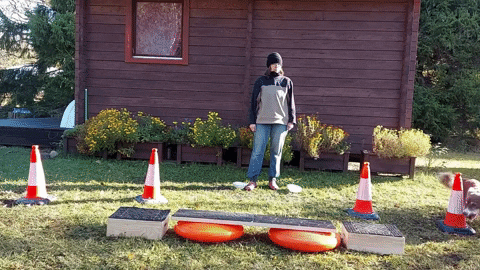
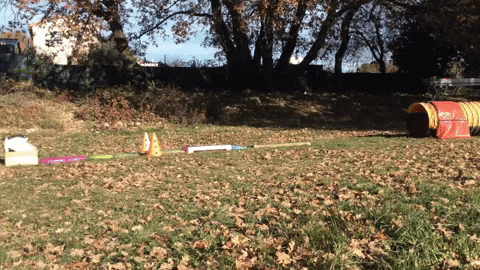
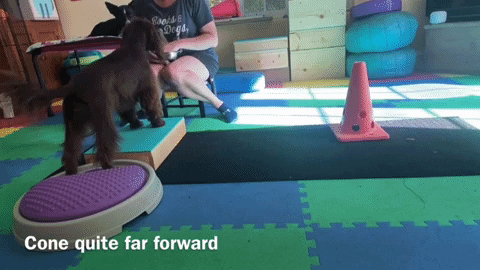
If you are interested in my dog walk course click here.
For me, teaching your dog how to use and control his body is a prerequisite skill for any sport exercise. In my mind it’s an essential part of +R training. And it allows your dog to learn faster, with less frustration, and stay fit and safe during sport challenges.
Happy training!
Mari Valgma
CPCFT

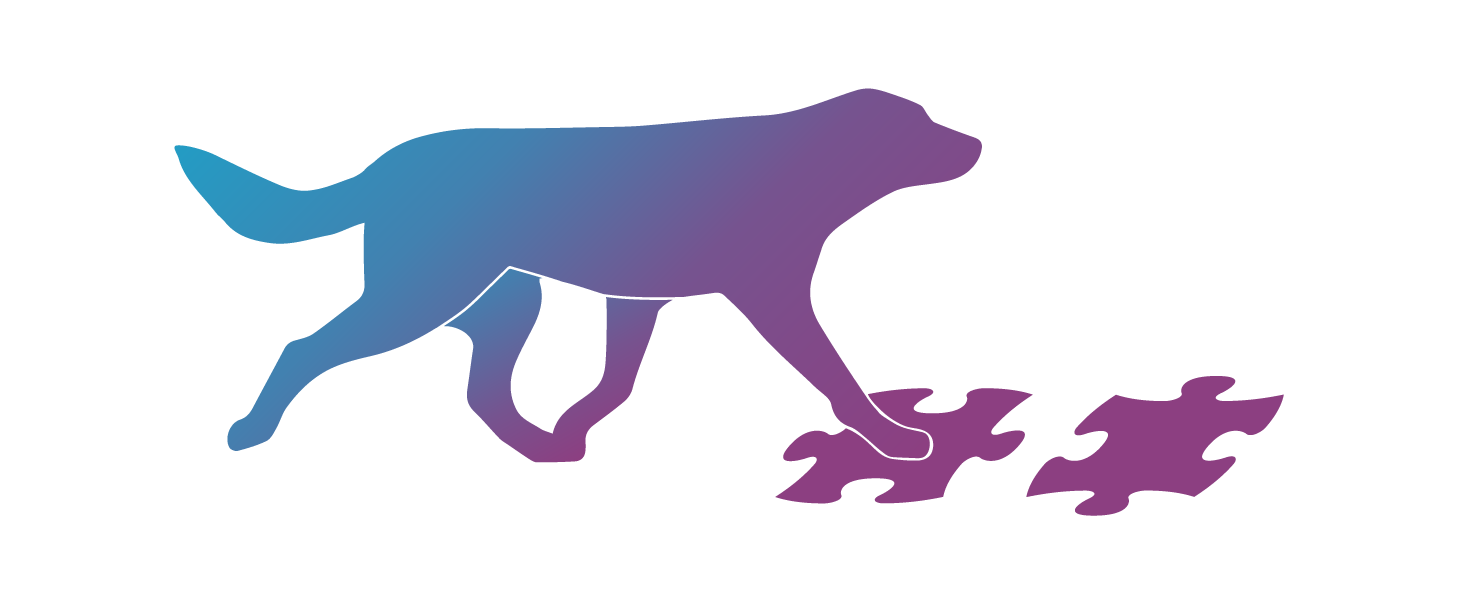
Where is the “newest blog post”? I see it referred to in a 2022 post. I started at the top. I am a member of your online class: Beyond dog sports to help my golden retriever toby build confidence for dog walk. He is struggling for the last year or so, since learning the teeter, thinking that the dog walk up ramp is going to tip. ;( WE are currently taking a break from DW since November 2022. I’m doing lots of research on this to see the best way to REintroduce the DW WHEN we are ready. We are currently working on plank exercises. Many programs reward the dog for walking down the ramp/plank for two on/two off but I feel like I need to turn it around and reward him for going up the ramp.
I have my dogwalk at home low (maybe 12-16”/ using milk crates) to support it. The DW at my two classrooms is At full height, he jumps off before he gets to true top/flat plank.
I been reading a couple of agility books and have some plans for my plank work/loopy exercises/movement puzzles/wobble boards/ balance disks and Vito’s game to build confidence …plan to slowly increase height of dogwalk ramp/plank…currently in my living room 🤣my husbands gonna try to find time to weld braces to support my current dog walk planks so we can slowly raise that also
Hi Alison! This is the latest blog post: https://themovingcanine.com/homepage/want-to-train-new-behaviors-faster-with-fewer-reps-heres-what-you-need/
There are no newer blog posts after that 🙂
As a Beyond Dog Sports: Dog Walk student, have you posted this exact question in the Facebook student group? There are quite a few exercises inside Beyond Dog Sports: Dog Walk that you can use for re-introducing the DW to your dog, especially running up to a plank. We can help you find the correct exercises in the student group 🙂